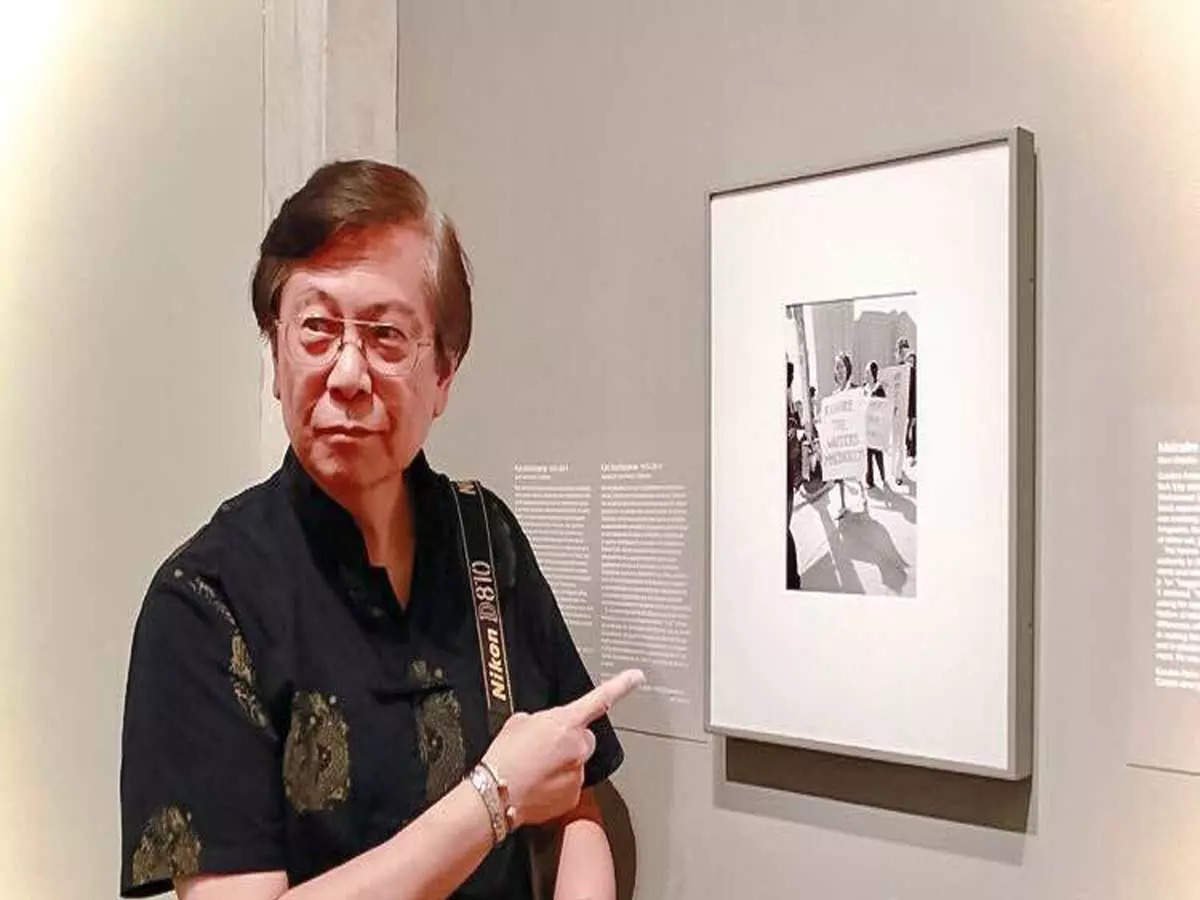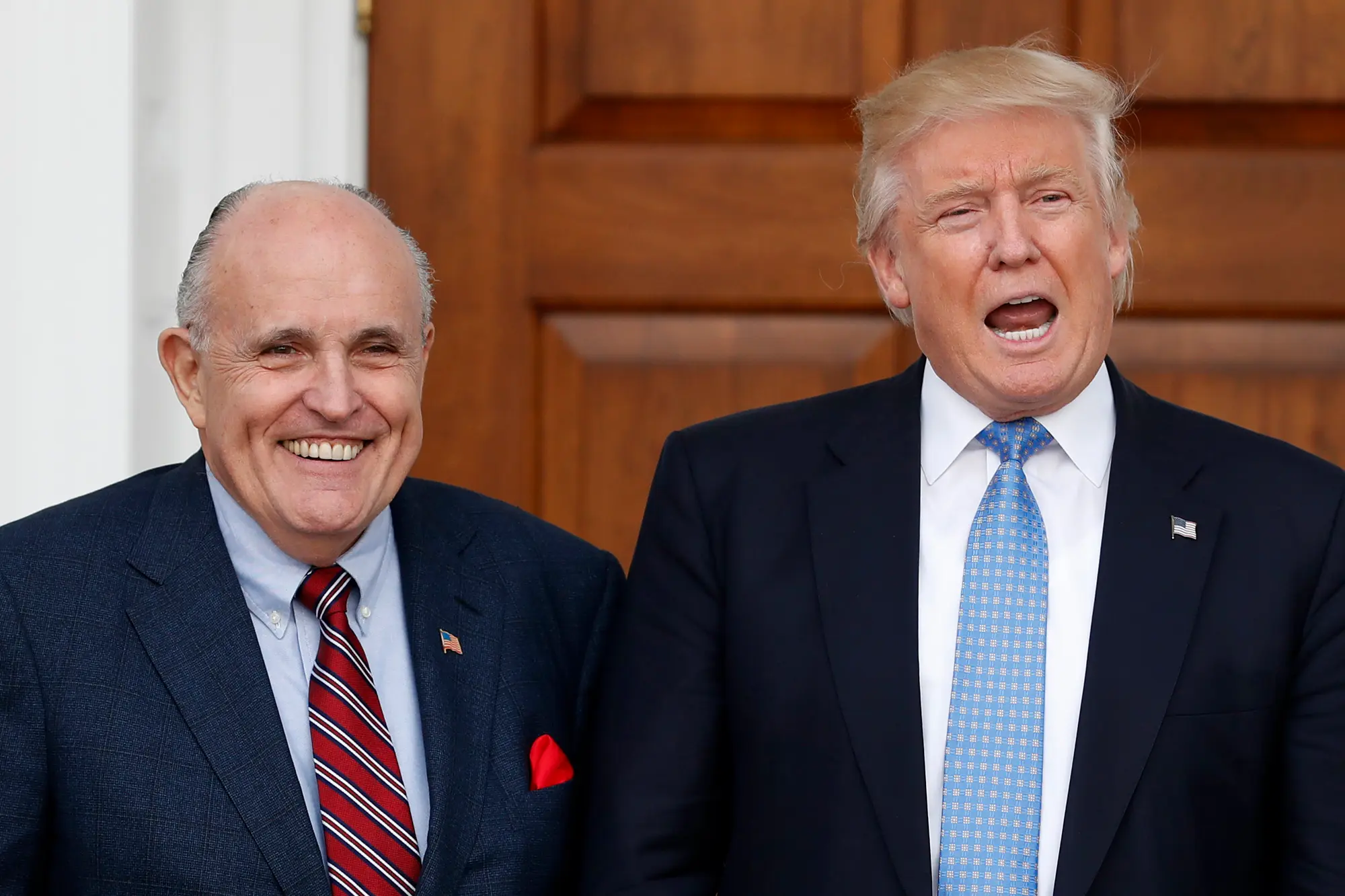United States
Kevin McCarthy: The Rise and Fall of the Shortest-Serving Speaker in U.S. History

Kevin McCarthy was elected speaker of the United States House of Representatives for only 10 months before being removed via a motion to vacate filed by fellow Republicans. Throughout his term as speaker was marked by controversy, conflict, and compromise as he attempted to navigate an increasingly divided and polarized Congress.
Early Life and Career
Kevin McCarthy was born January 26th 1965 in Bakersfield, California to parents who both worked as firefighters – his father was a firefighter while his mother was a homemaker – as part of a relatively modest but hardworking family. After attending California State University Bakersfield for both bachelor’s and master’s degrees in business administration respectively, he started his own deli business that he later sold off in order to pay for his education costs.
McCarthy first entered politics in 2000 as an elected trustee of the Kern Community College District. From 2002-2006 he served in the California State Assembly, eventually rising to become minority leader and becoming known for his pragmatic bipartisan approach and cooperation with then-Governor Arnold Schwarzenegger on various issues. Additionally he gained notoriety as both an influential fundraiser and recruiter for Republican causes.
McCarthy first entered Congress in 2006 after following his mentor and former congressman Bill Thomas into retirement after 28 years in office. McCarthy won with 70% of the vote, and has since been reelected nine times, representing California’s 22nd, 23rd, and 20th districts. Within weeks he advanced through House Republican leadership to serve as chief deputy whip from 2009-11; majority whip between 2011-14; and majority leader from 2014-20.
Speakership Election and Challenges
McCarthy became minority leader after Republicans lost the House majority in the 2018 midterm elections, facing criticism from conservatives due to perceived ineffectiveness in opposing Democratic agenda items and supporting former President Donald Trump when impeached twice by House. Furthermore, McCarthy had to deal with increasing influence from Freedom Caucus members who often clashed with more moderate and establishment factions of party.
In 2022, Republicans regained the House majority by a narrow margin, giving McCarthy another opportunity to run for speakership. Unfortunately for him, Jim Jordan–one of the co-founders of Freedom Caucus and an ally of Trump–offered an equally formidable challenge to him as Speaker: accusing McCarthy of being too soft on Democrats while promising more confrontational and conservative policies; Jordan accused McCarthy of being too accommodating and compromised with Democrats while promising more confrontational and conservative goals himself. As neither candidate could secure 218 votes necessary for victory; ultimately McCarthy emerged victorious–after making several concessions to his rivals before finally succeeding through 15 rounds of voting over two days before finally winning after making concessions or promises to each of them all at last!
McCarthy faced several internal and external challenges as speaker of his party. He needed to balance the interests and expectations of his diverse and divided caucus while working with both Democrats in Senate and White House and dealing with COVID-19 pandemic, economic recovery, immigration crisis, infrastructure bill, debt ceiling and January 6 commission among other issues affecting him as speaker. Trump continued his claims that 2020 presidential election had been stolen and encouraged his followers to resist Biden administration as well.
Motion to Vacate and Remove
McCarthy was removed as Speaker on October 3, 2023 due to a motion filed by Matt Gaetz of Florida’s Freedom Caucus and Republican state representative Matt Gaetz, who accused McCarthy of betraying both his party and country by supporting a continuing resolution that did not include provisions to defund or delay Biden’s vaccine mandates, social spending plan or tax hikes. Gaetz contended that McCarthy violated Hastert Rule which stipulates that bills only be brought up that had majority support within their majority party.
The motion to vacate was supported by 29 Republicans from the Freedom Caucus who were dissatisfied with McCarthy’s leadership and wanted a more conservative and loyal speaker; it also earned support from 187 Democrats who saw an opportunity to unseat him and create chaos and confusion within Republican ranks. Opposed were 181 Republicans who stood by McCarthy and warned it would cause irreparable harm to both party and country; 29 Democrats worried it might backfire on them by arming extremist elements within Republican ranks.
Before the motion to vacate was passed, an extremely contentious and chaotic debate lasted four hours, during which several lawmakers exchanged insults, accusations and even came close to physical altercations. McCarthy beseeched his colleagues to reject the motion in order to preserve unity and stability within both their party and House; accusing Democrats of playing political games that undermine democratic processes. Unfortunately for him, however, his appeals went unheard as it passed 216 to 210 with seven members absent.
Aftermath and Legacy
McCarthy’s removal as speaker was an unprecedented, historic, and seismic political event that stunned political circles around the world. This event marked the first time ever that a speaker was removed through a motion to vacate and had the shortest tenure ever for any U.S. speaker at only 10 months! Furthermore, bipartisan coalition members from both parties joined together in voting against him while members from his own party also joined together against him as they removed him as Speaker.
McCarthy’s removal as Speaker initiated the process to elect a new one, beginning after an eight-day recess. Patrick McHenry from North Carolina and deputy minority leader Patrick McHenry were appointed speaker pro tempore to preside over House until new one were elected on October 25, 2023; Mike Johnson from Louisiana who headed up Republican Study Committee won this three-way race and ultimately became new Speaker.
McCarthy’s rise and fall as speaker were reflective of the challenges and opportunities of leading a divided and polarized Congress in an unstable environment. Some praised his pragmatism and compromise while others criticised his weakness and inconsistency; fundraising and recruiting skills were often lauded while some bemoaned his lack of vision or strategy; ultimately he tried pleasing everyone but ended up pleasing no one; tried keeping both party and House together but ended up breaking them apart; made history but not the way he wanted.
Stay tuned to NEWSLANGMEDIA for the latest scoops and updates of Business News, Sports News, Technology News, United States and Entertainment News.
United States
Corky Lee: The Photographer Who Captured Asian American History

Corky Lee was a Chinese American photographer, journalist, and activist who dedicated his life to documenting and honoring Asian American life and contributions. His photographs captured the diversity and nuance of Asia Pacific American communities that were often ignored or misrepresented in mainstream media; his camera became his tool to fight for justice and representation of this population; many consider him unofficial Asian American Photographer Laureate. We will look back at Corky’s life and work, documenting Asian American history.
Early Life and Inspiration
Corky Lee was born September 5, 1947 in Queens, New York City to Chinese immigrant parents who owned a laundry business. He attended Jamaica High School and Queens College for American history studies before teaching himself photography with borrowed cameras from friends and relatives; due to financial restraints he could not purchase his own.
Lee was inspired to become a photographer after viewing a social studies textbook during school years. This particular photo depicted the completion of the transcontinental railroad in 1869 – constructed by thousands of Chinese laborers but depicted only depicting white workers; Lee felt this injustice was misrepresented history and resolved to correct it, saying “I have spent 40 years trying to change that one picture”.
Photographic Work and Activism
Lee began his photographic career in the late 1960s, documenting events and issues surrounding Asian American life in New York City and beyond. His images included protests, rallies, parades, festivals, cultural performances and everyday scenes of life among the Asian American population. Lee traveled both domestically and abroad in order to document stories and struggles of Asian Americans from diverse contexts and settings.
Lee’s work was both artistic and political and social. His goal was to challenge stereotypes and prejudices faced by Asian Americans, and showcase their achievements and contributions to American society. Additionally, his goal was to capture the diversity and complexity of the Asian American identity which encompasses multiple ethnicities, cultures, languages and histories – in his words “each time I take out my camera it’s like drawing out a sword to combat indifference, injustice and discrimination; I strive to dispel stereotypes.”
Lee’s work had an immeasurable effect on the Asian American movement that emerged in the 1960s and 70s in response to racism, discrimination, and exclusion. Lee’s photographs helped raise awareness and mobilize support for various causes and campaigns such as anti-Vietnam War sentiments, Chinatown garment workers’ strikes, Peter Yew police brutality case, Vincent Chin murder trial case, Japanese American Redress Movement etc. Additionally they preserved and celebrated Asian heritage and culture such as Chinese New Year celebrations at internment camps or celebrations such as Chinese New Year or Golden Spike ceremonies etc.
Legacy and Recognition
Lee was widely published and exhibited, both within mainstream and ethnic media outlets and venues. He worked for publications like the New York Post, Village Voice, Time Newsweek Associated Press Getty Images as well as books such as Asian Americans: An Encyclopedia of Social, Cultural Economic Political History Who Killed Vincent Chin?, Chinese American Exclusion/Inclusion to name just a few.
Lee received many honors and awards for his work, such as the Asian American Journalists Association Lifetime Achievement Award, New York Press Association Photographer of the Year Award and Organization of Chinese Americans Pioneer Award. On May 5, 1988 – as recognition for his service and contributions to New York’s communities – May 5 was officially dubbed Corky Lee Day by New York City Council.
Corky Lee died due to complications associated with COVID-19 at age 73 on January 27, 2021 and was mourned and celebrated by family, friends, colleagues, and admirers as a legend and hero who inspired many photographers around the world. A tribute exhibition dedicated to his memory entitled Photographic Justice: A Tribute to Corky Lee displayed his photographs alongside those taken by other photographers who were inspired by him.
Conclusion
Corky Lee was an Asian American historian whose photography captured its history through its lens. He celebrated and documented Asian American experiences and contributions while advocating for their justice and representation. Corky’s photography also helped shape Asian identity, culture and movement with its vision and voice; making Corky an unofficial Asian American Photographer Laureate who helped make Asian American history part of American history.
Stay tuned to NEWSLANGMEDIA for the latest scoops and updates of Business News, Sports News, Technology News, United States and Entertainment News.
United States
Trump and Giuliani File for Bankruptcy: The Fallout of Their Defamation Lawsuits

Donald Trump and Rudy Giuliani, his former personal attorney, have both sought bankruptcy protection due to mounting debts and legal troubles. Both former president and loyal ally are defendants in several defamation lawsuits over baseless allegations of widespread election fraud in 2020; therefore these bankruptcy filings could have serious ramifications on both their political and financial futures as well as ongoing attempts at holding them accountable for their actions.
Trump and Giuliani Have Both Filed Lawsuits against Each Other for Defamation
Trump and Giuliani are being sued by several individuals and entities claiming they were defamed by their false allegations of election fraud. Plaintiffs include:
Dominion Voting Systems and Smartmatic are two voting technology companies who claim President Trump and Giuliani caused them irreparable harm by spreading lies about their machines and software, harming their reputations and businesses in the process. They seek billions in damages from Trump, Giuliani and their allies who amplified conspiracy theories about them.
Eric Coomer is an employee at Dominion who alleges they received death threats after Trump and Giuliani accused them of manipulating votes as part of an ongoing global conspiracy to rig elections. Coomer is seeking unspecified damages from them as well as various right-leaning media outlets.
Ruby Freeman and Shaye Moss of Georgia Election Workers who allege they were subjected to racist harassment and intimidation after Trump and Giuliani falsely accused them of tampering with ballots and orchestrating a fake water leak, respectively. Freeman and Moss won a $148 Million verdict against Giuliani last week; additionally they are suing Trump for defamation and civil conspiracy.
Hunter Biden, son of President Joe Biden, accuses Trump and Giuliani of violating his privacy and dignity by spreading false and malicious stories about his personal and professional lives that involve an allegedly incriminating laptop and hard drive that were supposed to contain incriminating evidence against him. Hunter is seeking $100 Million as damages against both individuals as well as the New York Post which published some of these fabricated stories about him.
Trump and Giuliani Have Filed Bankruptcy Proceedings
Trump and Giuliani both filed for Chapter 11 bankruptcy protection to reorganize their debts and assets under court supervision, potentially helping them avoid paying the full amounts owed due to defamation judgments and settlements, along with creditors seeking payment from them.
Trump filed for bankruptcy on Monday, listing over $1 billion in liabilities and less than $500 million in assets. This figure includes debts from various businesses he owns such as hotels, golf courses and resorts as well as personal guarantees he provided on some loans he took out. His filing also mentions potential defamation lawsuit liabilities without specifying exact amounts owed or expected due.
Giuliani filed for bankruptcy on Thursday, citing over $100 million in liabilities and less than $10 million in assets. These include debts from legal fees, unpaid taxes, personal expenses and the $148 million Freeman and Moss lawsuit judgment; it also lists defamation lawsuits but doesn’t specify an exact figure owed or expected due.
Their Political and Financial Futures Are Threatened
Trump and Giuliani filing bankruptcy could have far-reaching ramifications on both their political and financial futures, as well as efforts to hold them accountable for their actions.
Politically, their bankruptcy filings could damage both men’s credibility and influence among their supporters and the Republican Party. Trump has hinted at running for president again in 2024; Giuliani has expressed interest in running for governor of New York as well; their bankruptcy could significantly decrease their fundraising ability and damage their image as successful businessmen and leaders.
Financially, filings could require them to sell or liquidate some assets and properties as well as disclose more details of their income and expenses. Filings could also expose them to increased scrutiny by courts, creditors and regulators who could uncover further evidence of wrongdoing or fraud.
On a legal front, these filings could further complicate and delay resolution of defamation lawsuits as well as any criminal probes that Trump and Giuliani face. It may also impact rights and interests of plaintiffs and creditors who must vie for a limited pool of funds available – though their claims still can be pursued and justice sought despite these filings.
Stay tuned to NEWSLANGMEDIA for the latest scoops and updates of Business News, Sports News, Technology News, United States and Entertainment News.
United States
How Olivia Dunne Became the Highest-Paid Female College Athlete in the US

Olivia Dunne is not only an exceptional gymnast but also a social media influencer and trailblazer in women’s sports. At just 20 years old, this LSU star made history when she became the highest-paid female college athlete thanks to the new Name, Image and Likeness (NIL) policy that allows student-athletes to earn money through endorsement deals.
Gymnast and Social Media Influencer
Dunne began her gymnastics journey at three and soon proved her potential, quickly becoming one of the youngest USA International Elite gymnasts at eleven years old and earning gold with the USA Junior National Team in 2017. At Louisiana State University she is an All-American gymnast cherished by fans – she earned full scholarships to attend each semester as an All-American gymnast!
But Dunne has become more than just a gym superstar; she has also amassed a significant following online, especially on TikTok and Instagram where she posts videos of her flips, routines, and lifestyle – currently boasting 7.2 million followers on TikTok and another 3.7 million on Instagram – making her one of the most beloved NCAA athletes online.
Women’s Sports A Game-Chaser
Dunne’s fame and influence drew the interest of many brands looking to tap into her fan base and partner with her, but until July 2021 NCAA rules prohibited student-athletes from accepting sponsorship deals or monetising their name, image or likeness in any way.
At that point, however, things changed with the implementation of NCAA’s New Incentivized Learning (NIL) Policy which gave student-athletes freedom to sign marketing contracts and make income from their personal brands. Dunne was among those to take full advantage of this opportunity and became one of the highest-paid NCAA female athletes with an estimated valuation of around 3.5 Million each year.
Dunne has entered into partnerships with various brands such as Vuori, Gopuff and Raising Cane’s. She made history when she appeared in Sports Illustrated Swimsuit issue as the first active NCAA gymnast ever! Additionally, she revealed she made over half a million dollars through paid promotions on social media alone!
Dunne is grateful to have been given this opportunity, but hopes to use her success to motivate and uphold other female athletes, who often face less opportunities and lower pay than male counterparts. She strives to see greater gender equity within women’s sports, showing young girls they too can pursue their goals and reach for their dreams.
“My dream for NIL would be that it can generate significant profits,” Dunne stated on a recent podcast. “When I began growing my social media, this rule wasn’t something I knew would change; rather I started expanding it because it’s what I like doing since being 10 years old.
“Opportunities should be equal for men and women in NCAA sports,” she stated in another interview. “I can pave the way and be an inspiration to young girls that look up to me.”
Stay tuned to NEWSLANGMEDIA for the latest scoops and updates of Business News, Sports News, Technology News, United States and Entertainment News.
-

 News7 months ago
News7 months agoMaegan Hall: From Award-Winning Officer to Disgraced Defendant in a Defamation Case
-

 Tech7 months ago
Tech7 months agoSnaptube: The History and Future of the Cloud-Based Messaging Service
-

 Tech7 months ago
Tech7 months agoTesla Stock: Why It’s Still a Buy Despite BYD’s EV Dominance
-

 News7 months ago
News7 months agoIsrael News: How Israel’s Gallant Plan for Post-War Gaza Could Change the Middle East
-

 Sports7 months ago
Sports7 months agoAaron Rodgers: The Comeback Story of the Year
-

 Entertainment7 months ago
Entertainment7 months agoMeghan Markle: The Duchess Who Dared to Defy the Monarchy
-

 Entertainment7 months ago
Entertainment7 months agoMama Cax: The Inspiring Story of the Model and Activist Who Defied the Odds
-

 Entertainment7 months ago
Entertainment7 months agoOppenheimer: A Biographical Thriller by Christopher Nolan


